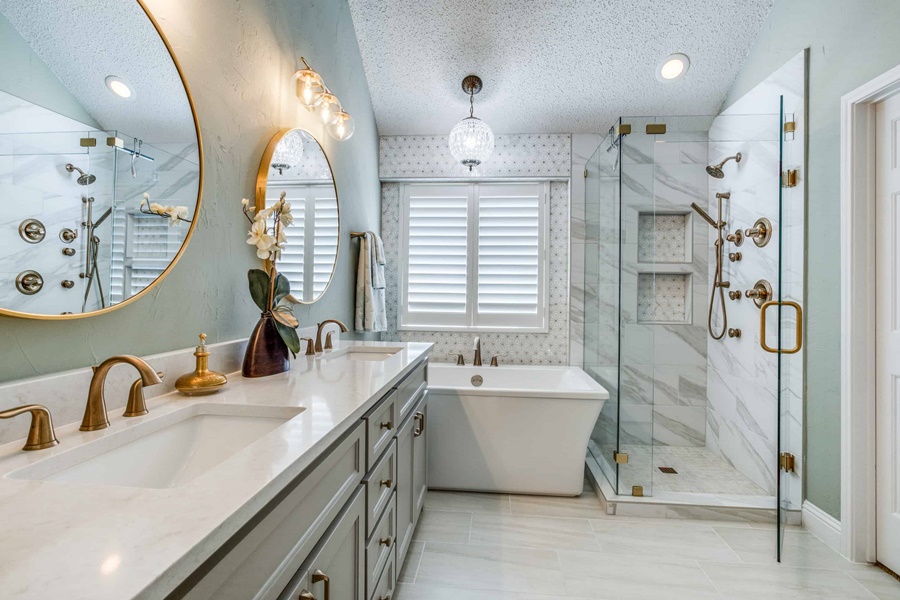A bathroom remodel is one of the most rewarding home improvement projects it not only enhances the comfort and aesthetics of your home but also boosts its value. However, remodeling a bathroom requires careful planning to stay within budget, avoid unnecessary delays, and ensure the final result aligns with your vision. This comprehensive guide walks you through the key steps to plan your bathroom remodel successfully.
Step 1: Define Your Goals
Start by asking yourself why you want to remodel your bathroom. Are you trying to:
Increase resale value?
Fix existing issues like plumbing or water damage?
Make the bathroom more functional?
Modernize an outdated space?
Create a more luxurious or spa-like environment?
Clarifying your goals helps prioritize your decisions and shapes the scope of the project.
Step 2: Set a Budget
Determine how much you're willing to spend. A bathroom remodel can cost anywhere from a few thousand dollars for a basic refresh to $30,000 or more for a high-end renovation.
Consider These Cost Factors:
Labor: Often 40–60% of your total cost.
Materials: Tile, vanities, countertops, fixtures, etc.
Plumbing and electrical upgrades
Permit fees
Unexpected costs: Always set aside at least 10–15% of your budget for surprises.
Step 3: Assess the Space
Measure your bathroom carefully, noting the current layout, door and window placement, plumbing lines, and electrical outlets. Think about how the current space is used and what doesn’t work.
Ask Yourself:
Do I need more storage?
Is the layout functional?
Could I improve lighting or ventilation?
Do I need a bathtub, or will a walk-in shower suffice?
Understanding your space limitations helps determine what’s realistically possible within your budget.
Step 4: Create a Design Plan
Once you know your goals and budget, start creating a design. You can work with a professional designer or use online design tools to help visualize your ideas.
Key Design Elements:
Layout: Will it remain the same, or are you moving major elements?
Style & Aesthetics: Modern, traditional, rustic, spa-inspired?
Fixtures & Materials: Bathtub, shower, toilet, sink, vanity, faucets, tile, flooring.
Lighting: Task, ambient, and accent lighting.
Color Scheme: Light colors open up small spaces, darker tones can feel cozy and elegant.
Don't forget to incorporate universal design principles such as wider doorways or grab bars especially if you plan to age in place.
Step 5: Choose Materials and Fixtures
Select materials and fixtures that balance function, style, and durability. Always opt for water-resistant and easy-to-clean finishes in a bathroom environment.
Common Material Choices:
Flooring: Porcelain or ceramic tile, luxury vinyl, or natural stone.
Walls: Paint, tile, or waterproof panels.
Countertops: Quartz, granite, marble, or laminate.
Fixtures: Choose water-saving faucets, toilets, and showerheads for efficiency.
Step 6: Hire Professionals (or DIY Wisely)
Depending on the scope of the project and your skills, you may need to hire:
A general contractor
Plumber
Electrician
Tiler
Carpenter
Get multiple quotes, check references, and confirm licenses and insurance. For DIY projects, only tackle tasks you're confident in—leave plumbing and electrical work to the pros if you're not certified.
Step 7: Secure Permits
Some remodels require permits, especially if you're making structural changes, moving plumbing, or altering electrical systems. Check with your local municipality to avoid fines or issues during resale.
Step 8: Order Materials in Advance
Once your design is finalized and approved, order all materials well before the project begins. Delays in tile, vanities, or fixtures can set back your entire schedule.
Step 9: Prepare for Construction
Remodeling can be disruptive. Plan accordingly:
Set up a temporary bathroom if this is your only one.
Clear out personal items.
Cover floors and nearby areas with plastic sheeting or drop cloths.
Keep communication open with your contractor to handle any surprises quickly.
Step 10: Final Walkthrough and Punch List
Once construction wraps up, do a thorough walkthrough with your contractor. Make a punch list of any incomplete or unsatisfactory work, and ensure everything functions correctly before signing off.
Conclusion
Planning a bathroom remodel takes time, research, and organization, but the effort pays off in a space that’s more functional, beautiful, and valuable. Whether you’re tackling a powder room upgrade or a master bathroom transformation, following a structured plan ensures the process goes smoothly from concept to completion.

